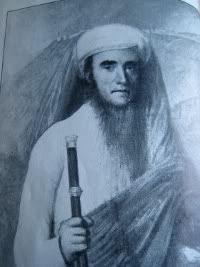
- Koenraad Elst writes about the Vedic Conference that happened in Kozhikode in January and how the Aryan Invasion Theory still lives on
Having spent time in the real world, interacting with real scholars, I know the real situation, which is that the AIT is still taught from all the important platforms. People who tell you diferently, live in a fantasy world and only interact with village bumpkins who accept their word for it; so as feedback they ultimately only hear their own opinions. Fortunately, we can ignore recent history including these Hindu will-o-the-wisps, and start work on the really available testimonies to ancient history.
- GeoCurrents has the third part of the series of posts on the Vexatious History of Indo-European Studies. The latest one has a section on how it is dealt in India.
Meanwhile, the legacy of Müller and his peers have came under increasing attack from another quarter altogether, that of Indian nationalism. This school is epitomized in D. N. Tripathi’s edited collection of 2005 entitled A Discourse on Indo-European Languages and Cultures. The various contributors to this volume understandably object to the old narrative of the Aryan invasion of the sub-continent, a story that emerged in the 19th century from a combination of philological inquiry and racial science. According to this account, superior Aryans invaded South Asia in the Bronze Age, conquering and ruling over the indigenous dark-skinned people and then creating the caste system to ensure that the two groups remained distinct and unequal. Support for this theory was supposedly found in the Rigveda, one of humankind’s oldest text. Yet as Trautmann shows, this neat and simplistic narrative of Aryan invasion had actually been opposed by most of the leading European Sanskritologists of the 19th century. It has also been rejected by modern mainstream scholars, who deny stark racial divisions and tend to posit plodding infiltrations of Indo-European speakers into the Indian subcontinent, along with a gradual and complex development of caste ideology. And regardless of the seemingly clear division of South Asia into an Indo-European north and Dravidian south, it has long been recognized that the entire region shares numerous linguistic features, making it a Sprachbund or linguistic convergence zone.
- Few months back, there was a popular news article which claimed that new clues from Lumbini pushed back the date of Buddha. Jayarava, after reading the original paper, writes
There is no doubt whatever that the find at Lumbini is significant and fascinating. But Coningham et al (and Coningham himself) have overstated the claims for what this find signifies. In particular it tells us nothing whatever about the dates of the Buddha. What it tells us about is the dates of human occupation and use of the site at Lumbini. This is intrinsically interesting, but is only an outline that requires considerable filling in. Specifically it tells us nothing about who the occupants were. The authors of the article seem to have been carried away by the minutiae of the discovery and the assumption that all archaeology on an Asokan site is ipso facto Buddhist.
- A while back I did a post on the origins of Aviyal. Maddy writes that in Travancore it was also known as Ramayyar kootu and has a post on Ramayyan Dalawa, who was Chanakya and Shakuni rolled into one.
If you were to study the successful reign of Marthanda Varma, you will quickly notice that there was one person who faithfully tended to him and guided him through those hectic days. In fact that person had been around even before MV took the throne, rightly or wrongly, from his uncle Rama Varma. The shrewd man was not only a Shakuni and Chanakya rolled in one, but also a very able administrator. Krishnan Raman or Ramayyan, that was his name, of Tamil Brahmin stock, was a good cook and a person of stern behavior, great logical outlook and acute intellect. Well, if you were to look at his story, you would be surprised at the involvement he had with the illustrious king, and not only that but you will also come across a large number of anecdotes attributed to him and retold even today. He is also considered to be the inventor of the Malayali dish Aviyal or what is sometimes termed as Ramayyar kootu in Travancore.
That’s the 6th anniversary of the carnival. If you have any links that are to be featured, please send them by any of these channels. The next carnival will be up on Feb 15th.


 For Dubois, these Hindu fables were absurd. Before presenting his theory, he first dismissed two other ideas. The first one claimed that Egyptian king Sesostris conquered land till the Ganges; the second, that the caste system was obtained from the Arabs.
For Dubois, these Hindu fables were absurd. Before presenting his theory, he first dismissed two other ideas. The first one claimed that Egyptian king Sesostris conquered land till the Ganges; the second, that the caste system was obtained from the Arabs.